Alex Gray - Never Somewhere Else
Здесь есть возможность читать онлайн «Alex Gray - Never Somewhere Else» весь текст электронной книги совершенно бесплатно (целиком полную версию без сокращений). В некоторых случаях можно слушать аудио, скачать через торрент в формате fb2 и присутствует краткое содержание. Год выпуска: 2001, ISBN: 2001, Издательство: Howes, Жанр: Триллер, на английском языке. Описание произведения, (предисловие) а так же отзывы посетителей доступны на портале библиотеки ЛибКат.
- Название:Never Somewhere Else
- Автор:
- Издательство:Howes
- Жанр:
- Год:2001
- ISBN:9781841976082
- Рейтинг книги:5 / 5. Голосов: 1
-
Избранное:Добавить в избранное
- Отзывы:
-
Ваша оценка:
- 100
- 1
- 2
- 3
- 4
- 5
Never Somewhere Else: краткое содержание, описание и аннотация
Предлагаем к чтению аннотацию, описание, краткое содержание или предисловие (зависит от того, что написал сам автор книги «Never Somewhere Else»). Если вы не нашли необходимую информацию о книге — напишите в комментариях, мы постараемся отыскать её.
Never Somewhere Else — читать онлайн бесплатно полную книгу (весь текст) целиком
Ниже представлен текст книги, разбитый по страницам. Система сохранения места последней прочитанной страницы, позволяет с удобством читать онлайн бесплатно книгу «Never Somewhere Else», без необходимости каждый раз заново искать на чём Вы остановились. Поставьте закладку, и сможете в любой момент перейти на страницу, на которой закончили чтение.
Интервал:
Закладка:
Martin replaced the phone and grabbed his jacket from the back of the chair. The Art School! Was there some new lead concerning Lucy Haining that he should make it his business to find out about? Martin’s long legs took the stairs two at a time. Whatever Dr Brightman might stand and stare at this time, he wanted to see it too.
CHAPTER 17
Sauchiehall Street certainly expressed the dichotomy of Scotland’s largest city, thought Solomon, as he turned into the main thoroughfare and headed west. Buses rumbled along Hope Street between ranks of pedestrians impatient for the lights to change. More than once, Solomon had held his breath as some old dear rushed out, defying the traffic. They seemed to lead a charmed life in this city, for he’d never seen an accident yet. Once in the pedestrian precinct, Solly slowed down, taking a professional interest in the mass of humanity coming and going. Snatches of conversation floated past him, accents betraying both the cultured and the couthy.
‘C’m ere, youse!’
A young mother wheeling a buggy yelled at her two older offspring who were weaving in and out of the human traffic. Giggling, they dashed over to their mother’s side and Solomon watched, amused, as they made faces behind her back. Pensioners sat on benches, some merely staring at the world going by, but others intent on feeding the feral pigeons. Behind him the Big Issue sellers were plying their wares outside Marks amp; Spencer’s and the shopping mall. In doorways buskers expressed their social outrage in plaintive song to the world at large, but to nobody in particular.
Solomon glanced up at Mackintosh’s elegant Willow Tea Rooms, an early twentieth-century gem, though the School of Art was the real jewel in the celebrated architect’s crown. Here and there, tucked into quieter side streets, were the galleries where contemporary artists now made their names. Solomon had wandered around some of them occasionally, his eye favouring the brighter abstracts which commanded attention. But today he would not be distracted from attending to a much more sombre view.
Leaving the main street, the psychologist began the steep climb which would take him up to the Art School and beyond, to Garnethill. A young traffic warden was taking note of a white Toyota whose owner had left it overlong at the meter. She kept her head down as Solomon passed, grinning to himself. He had never learned to drive and affected to despise governments which allowed too much road traffic and contributed to hazards like pollution and road rage. Death from a traffic accident provoked a certain resigned sadness, of course, but the deaths of Lucy Haining and the other young women were an outrage that society must refuse to accept.
Solomon crossed over to where the School of Art towered above him. It seemed stark and bleak today, casting its shadows towards the area where one of its students had ended her bright prospects. As Solomon glanced at his makeshift map, he did not notice a tall figure standing above him on the steps to the main entrance.
At first his eye was caught, not by the main building at all, but by a vehicle parked on the opposite kerb. The blue Art School minibus bore an uncanny resemblance in size and shape to an ambulance.
Solomon crossed the street to take in the vista of this celebrated School, itself a work of art. High over the entrance swung a bow of black metal serving as a token arch. Its keystone was a plain black box, rudely interrupting the flowing line like some purely functional appendage. Yet on closer inspection it became a sinister rectangular mass glaring at the world with one all-seeing indigo eye. Below the black-banded windows, unkind spikes and knotted buttresses of thin metal led the eye downwards to the railings with their abstract motifs.
The curving stairs made a pleasing invitation to proceed up towards the entrance, but the grubby white doors set with purple and blue eyes did not beckon. Rather it seemed a challenge to enter this holy of holies. Solomon smiled to himself, catching sight of a blonde student who now lounged against the railings. Clad all in blue denim, she was flicking cigarette ash onto the hallowed steps, seemingly oblivious to the mystique around her. Perhaps familiarity with the School as a workplace bred contempt? Solomon looked around him. To one side the newly cleaned Victorian tenements of Dalhousie Street fell away steeply. On the other side a conglomeration of concrete and glass pressed close, its ugliness in sneering contrast to the refinement of the School of Art.
He would return to wander the interior and tread the floors where Lucy Haining had daily trod. But not yet. Pausing to look both left and right. Solomon eventually decided to retrace his steps and continue up Dalhousie Street towards that cross on his map.
As the sun shone down on the streets it was hard to see this place as one where evil had stalked. There was such an air of normality, the public going about their business. Three schoolboys in green uniform passed him by, laughing and chattering; an Asian woman swathed in cloths of gold and brown glided along, her plastic shopping bags rustling by her side.
Solomon slowed down as he came to the square of waste ground. This was where murder had taken place. Nobody had seen anything suspicious on that cold winter night and, looking at the adjacent buildings, Solomon could see the advantages of choosing this as a place to conceal an act of murder. The tenement building on one side was covered in scaffolding for what seemed a long-term project. Each and every window was boarded up. Blind eyes overlooked the patch of ground. Today, men in white overalls were clambering over the tubular scaffolding. The psychologist could hear them whistling as though the air around them had never been contaminated by evil.
He walked around reading what he saw like some familiar language. The proximity to the School of Art had added a dimension of creativity to this long-neglected area. On top of the lamp-posts squatted fat black metal pigeons looking as though they were quite capable of muting down the length of each tall, thin pole. In some ways, Solomon thought, this was typical of much of Glasgow’s urban regeneration where smart new developments in red brick with landscaped corners cocked a snook at their older, worn out neighbours. On the far side of the waste ground, tenements huddled together, some with neo-classical features still clinging to the stonework; a few still hopelessly grimy with more than a century’s dirt.
Continuing to walk round the perimeter of the site, he came at last to where the killer must have taken Lucy. A narrow lane bounded the area on one side, flanked by a high brick wall. Uneven cobbles, which were more like bricks stuck haphazardly into the ground, caused him to stumble. Above the wall, branches of barbed wire swung menacingly on metal brackets. The psychologist shuddered. Even in broad daylight it felt unsafe to walk here. Suddenly he stopped and stared. Built directly into the wall was a strange house on two storeys, resembling the back portion of a warehouse. And then, just as he stood there, a young woman emerged from the front door, closed and locked it behind her, and marched purposefully down the lane. Solomon looked at the house again. There were two doors, one at street level and the other like the entrance to a store, set on the first floor. Each was painted a bright, defiant red. There were windows on this side. He presumed the police had questioned the residents to no avail and, with a resigned sigh, turned to the waste ground itself. The ashes of bonfire night were now only a black patch in the winter grass. A few scrawny ash trees would create a screen from the road in high summer, but as yet they were leafless.
Lucy had used this lane as a short cut to her friend’s flat. The killer knew that, Solomon told himself. He walked back up the lane then turned and strolled alongside an imaginary Lucy, engaging her in … what? Conversation? Argument? He stopped before reaching the red-doored house and tried to imagine the situation. Had her killer taken Lucy by the shoulder in an embrace that was meant to look protective but that was actually steering her towards her death? What had made the girl stop on her journey? The scalping had taken place in a corner of the ground where the shadows from the wall and trees were darkest. Yet the place would never have been discovered had Janet Yarwood not intimated that Lucy might have been on her way to see her: she often came that way. Painstaking police work, thought Solomon, ungrudging in his admiration for Lorimer’s team. The lane would have done just as well. In fact, it would have been a duplicate of Donna Henderson’s murder, and that, surely had been his intention? Had something gone wrong, then? Had Lucy struggled, run towards the waste ground in an attempt to break through the line of trees but been caught by the killer’s deadly chain?
Читать дальшеИнтервал:
Закладка:
Похожие книги на «Never Somewhere Else»
Представляем Вашему вниманию похожие книги на «Never Somewhere Else» списком для выбора. Мы отобрали схожую по названию и смыслу литературу в надежде предоставить читателям больше вариантов отыскать новые, интересные, ещё непрочитанные произведения.
Обсуждение, отзывы о книге «Never Somewhere Else» и просто собственные мнения читателей. Оставьте ваши комментарии, напишите, что Вы думаете о произведении, его смысле или главных героях. Укажите что конкретно понравилось, а что нет, и почему Вы так считаете.
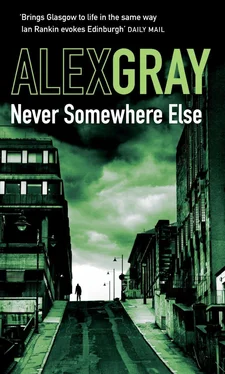
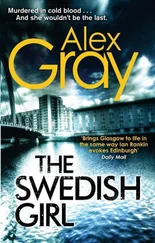
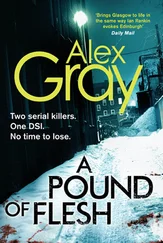
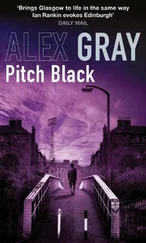
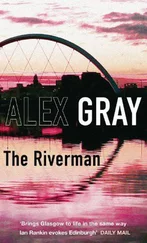
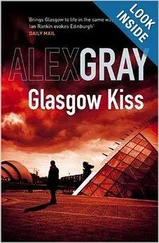


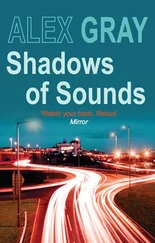
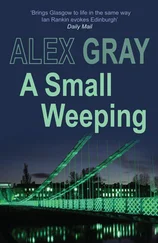

![Alesya-Grey - Оборотень [СИ]](/books/428392/alesya-grey-oboroten-si-thumb.webp)